Abstract
A population of 10,173 men, employed in 37 plants, was identified as having worked for at least one year in jobs involving probable exposure to vinyl chloride monomer (VCM) prior to January 1, 1973. Of the 9677 men whose vital status was determined, 707 were known to have died. For 699, death certificates were obtained. The standardized mortality ratio (SMR) for all causes was 89, that for all malignancies was 104. The only type of malignancy found in significant excess was in the category of malignant neoplasms of the brain and other parts of the nervous system; 12 deaths occurred where 5.9 were expected, for an adjusted SMR of 203. There were slight but inconclusive upward trends in all malignancies, and for malignancies of the respiratory tract, digestive tract, and central nervous system associated with reported levels of maximum exposure to VCM. When groups in whom less than 20 years had elapsed from the first exposure were compared with those with 20 or more elapsed years, and 25 or more elapsed years, no significantly different SMR's were detected for major primary sites of malignancy. Plans for an updated study of mortality, to include deaths in the period 1973-1979 are briefly discussed.
Full text
PDF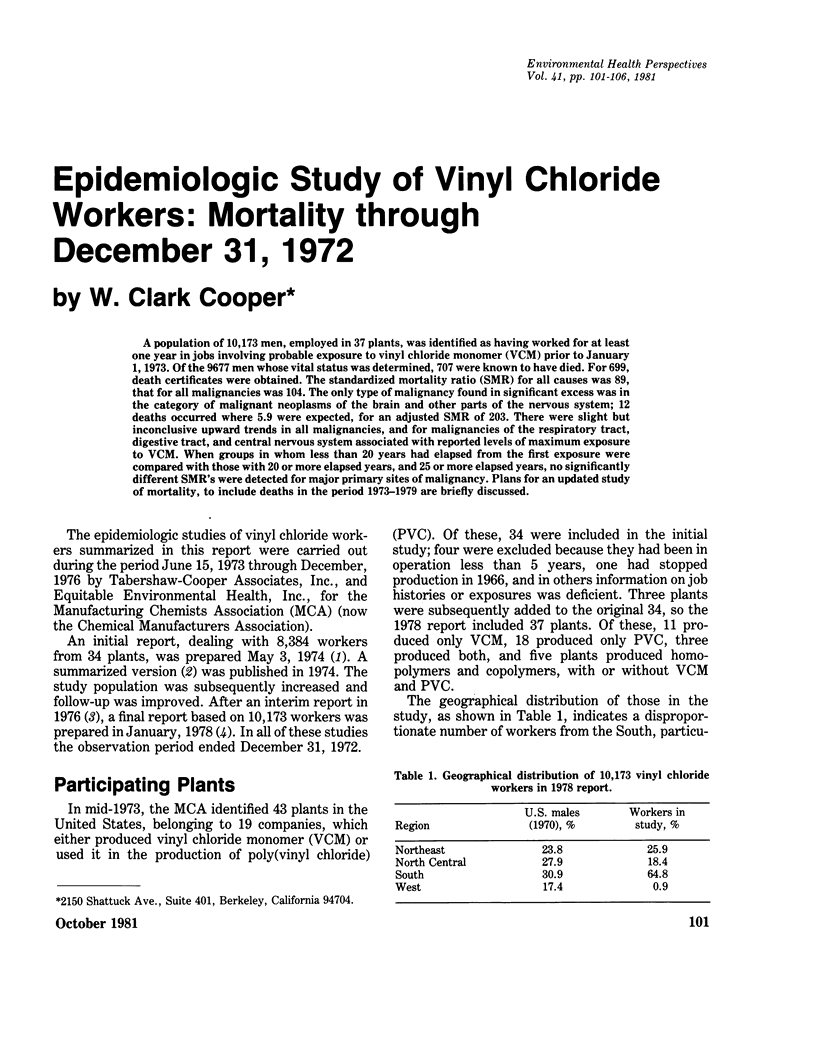
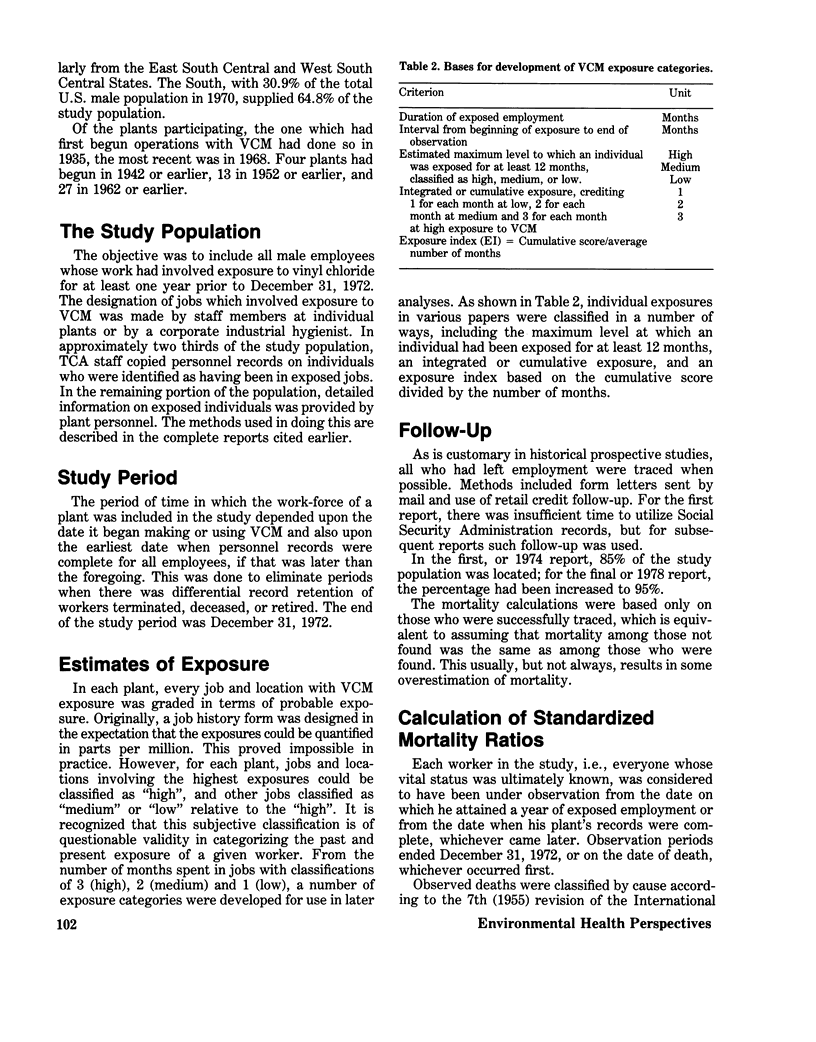
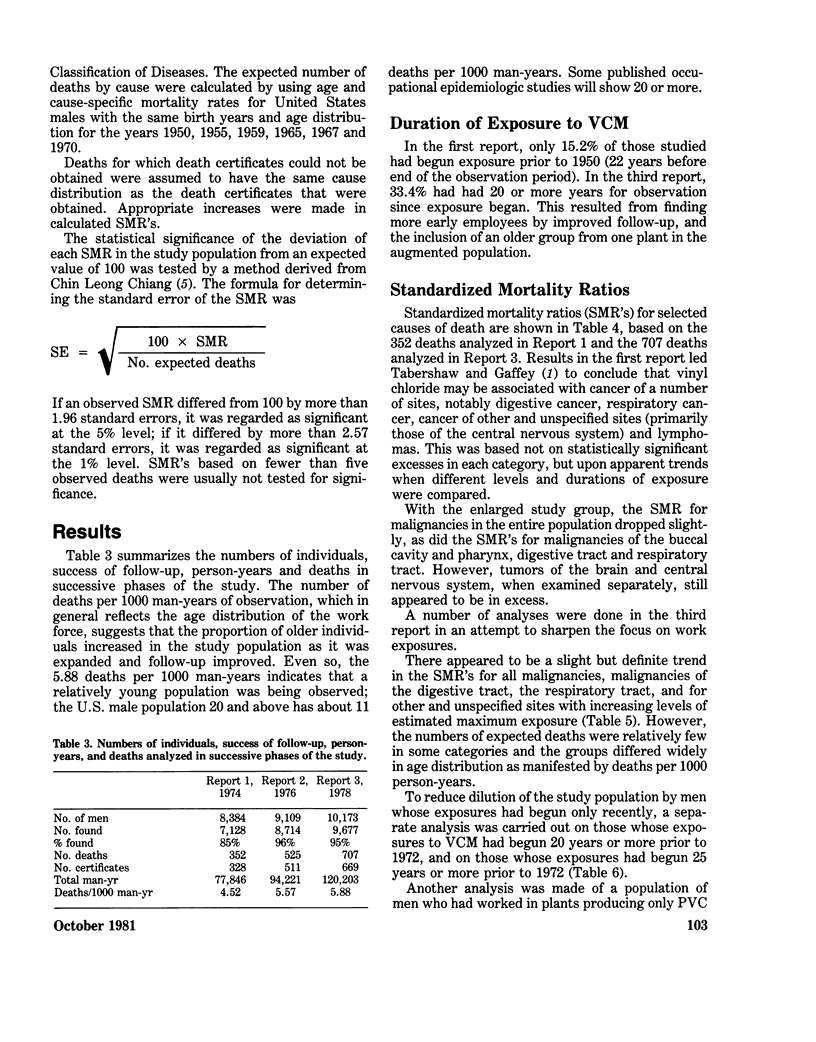
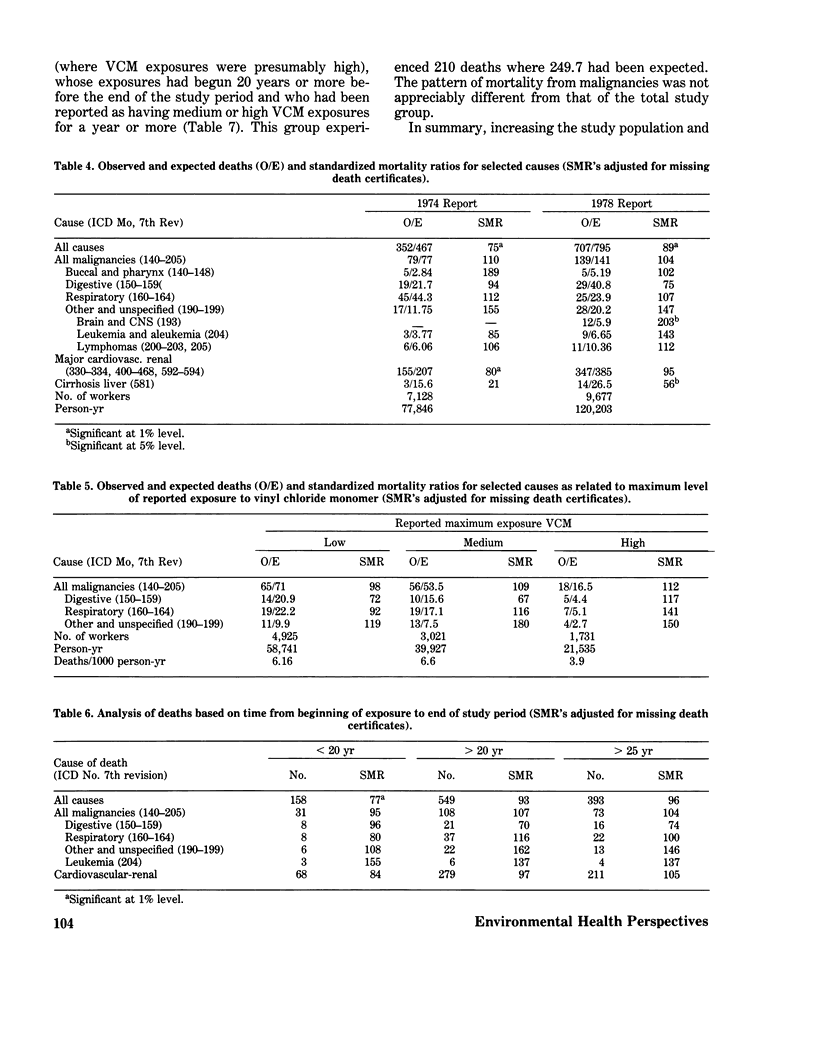
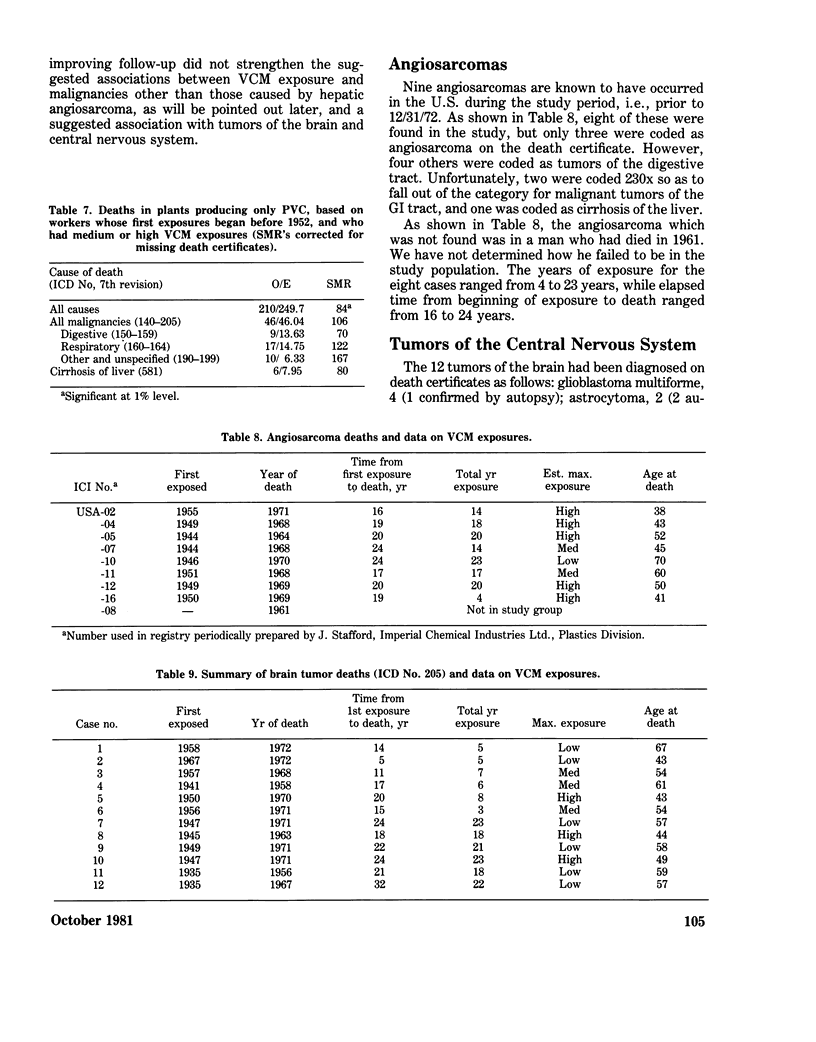
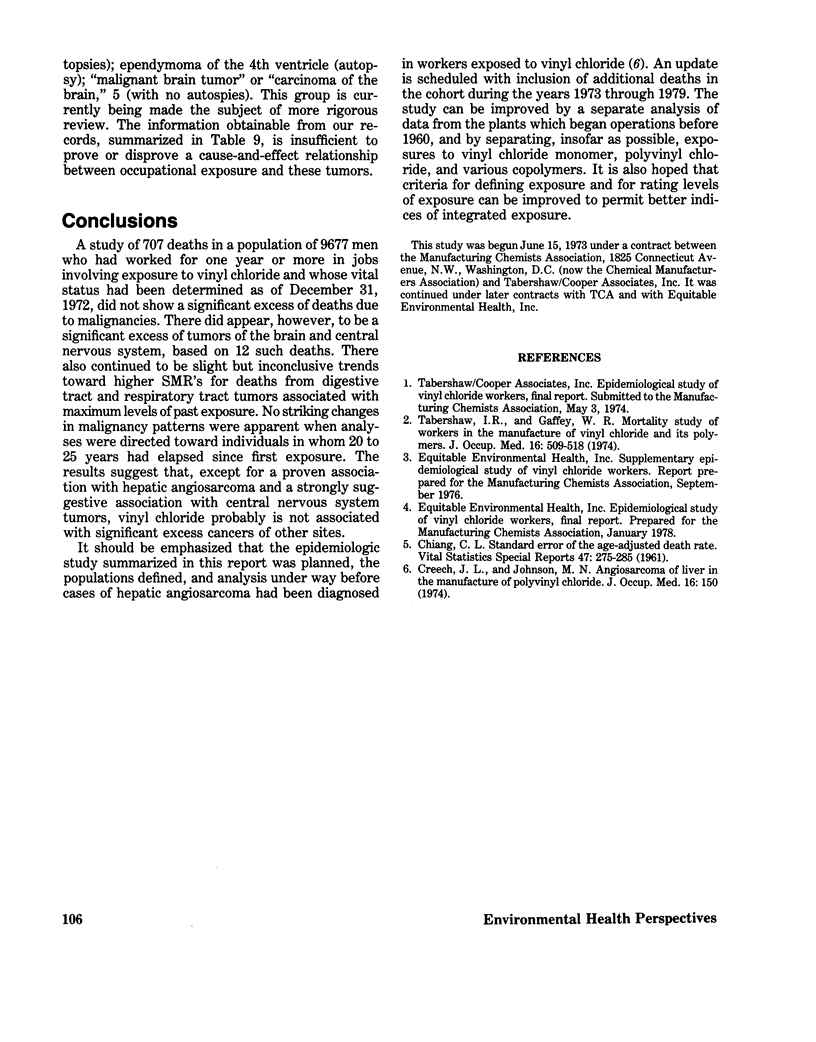
Selected References
These references are in PubMed. This may not be the complete list of references from this article.
- Creech J. L., Jr, Johnson M. N. Angiosarcoma of liver in the manufacture of polyvinyl chloride. J Occup Med. 1974 Mar;16(3):150–151. [PubMed] [Google Scholar]
- Tabershaw I. R., Gaffey W. R. Mortality study of workers in the manufacture of vinyl chloride and its polymers. J Occup Med. 1974 Aug;16(8):509–518. [PubMed] [Google Scholar]


